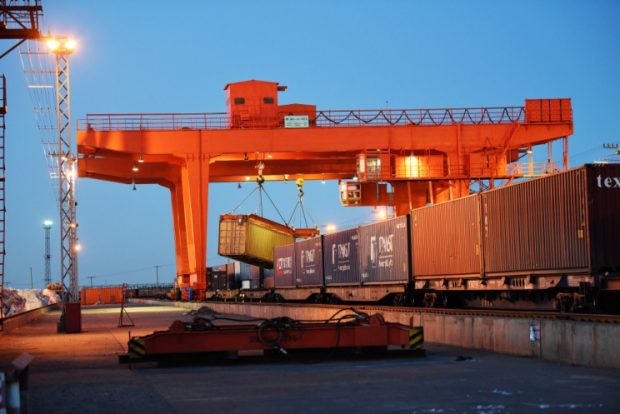
Expanded opening up prospers China’s border trade

The prospering border trade of China is a reflection of the great vitality of the country’s opening up, as China has just celebrated the 40th anniversary of reform and opening up at the end of last year. The convenient custom clearance services at ports in Heilongjiang province and Guangxi Zhuang Autonomous Region, as well as the changes taking place in border areas all indicate what Chinese leaders has proposed – “China’s door of opening-up will not be closed and only open even wider”, one of the most powerful lines made by China in recent years. The average customs clearance time in Heilongjiang’s Suifenhe Port has been cut by over a third after an expansion project, and the handling capacity has also been enlarged to 38.5 million tons at this port located in a key development and opening-up zone.
The reduced custom clearance time has brought huge benefits to Wang Yingdong, a senior manager of the Suifenhe Lanyang International Cargo Transportation Co.,Ltd. “Time is everything for vegetable and fruit exporters like us. It was not easy for us to preserve the products as we had to spend a whole day clearing customs, but now we enjoy instant services for customs clearance, and it’s very convenient,” she told People’s Daily. Besides, highway crossing points also adopted the one-stop checking and clearance system that only takes 20 seconds to pass through.
Last year, the State Council approved the establishment of an experimental zone for border tourism in Dongxing, Fangchenggang of Guangxi. Starting from exit & entry facilitation, all-for-one tourism promotion, and tourism cooperation expansion, the local government is pushing forward the restructuring and upgrading of local tourism. Dongxing is the only Chinese port city that borders by sea and land with a country in the Association of Southeast Asian Nations. The city and Vietnam’s Mong Cai are neighbors facing each other across a river. Thanks to a renovation project of the port city, the capacity of daily personnel exchange between the two cities has improved to 50,000 from the original 20,000. In addition, it only takes 6 seconds for each person to cross the border.
An official from local immigration inspection station introduced that over 1.63 million tourists entered or exited China via Dongxing from Jan. 1 to Feb. 14 this year. The number of tourists travelling to Vietnam exceeded 0.4 million, up 58.4 percent over the previous year, hitting a record high, the official added. Erenhot, Inner Mongolia Autonomous Region, also witnessed the rapid development of border trade, as loads of commodities were exported to Belt and Road countries by China-Europe freight trains via the city after the Spring Festival. With the in-depth promotion of the Belt and Road construction and the continuous expansion of trade among China, Mongolia and Russia, logistics business at the ports of Erenhot is gaining increasing vitality. The city’s railway port handles more than 70 percent of the transportation between China and Mongolia and customs transit between China and Russia, seeing increasing imports and exports year by year. The port has gradually developed into a comprehensive logistics system that integrates transportation, storage, processing, and information management, serving as a hub of the Silk Road on the grasslands. From Heilongjiang, Guangxi to Inner Mongolia, border trade ports are thriving under the reform and opening-up policy, just as what President Xi Jinping pointed out in his New Year’s speech – “China, as a country of people on the move, is energetically pursuing prosperity.”
By Fang Yuan, Li Zong & Wang Hailin
(People’s Daily)


